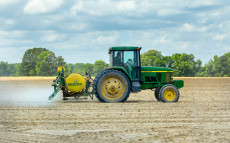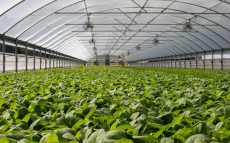- pathfindersAI
- Job Profile
Fallers
Summary
Job Description: Fallers
What They Do
Fallers are skilled professionals who specialize in the felling of trees, a critical task in the forestry and logging industries. Their primary role is to safely and efficiently cut down trees using chainsaws or other specialized equipment. Fallers must make precise cuts to ensure that trees fall in the direction intended, avoiding damage to surrounding structures, other trees, or workers. Their expertise is crucial in managing forest resources sustainably, supporting both the lumber industry and environmental conservation efforts.
Job Responsibilities
The job responsibilities of a Faller are both physically demanding and require acute attention to detail. These professionals are responsible for assessing tree characteristics and surrounding terrain to determine the optimal direction of the fall. They cut through trunks and guide trees to the ground, often removing limbs to reduce weight and size. Ensuring safety is paramount; Fallers must consistently wear protective gear and adhere to strict safety protocols. Additionally, they are tasked with maintaining their equipment, conducting routine checks to ensure it functions correctly, and scheduling necessary repairs.
Essential Skills
Successful Fallers possess a unique combination of physical and cognitive skills. Physical strength and stamina are essential due to the demanding nature of lifting and handling heavy equipment and materials. Precision and control are crucial as Fallers must make calculated cuts that dictate the timber’s fall direction. Good hand-eye coordination and depth perception help ensure these cuts are safe and accurate. Furthermore, problem-solving skills are necessary to navigate challenging environments and unexpected obstacles. Many Fallers also cultivate strong teamwork and communication abilities, indispensable for coordinating tasks with other forestry workers.
Educational Pathways
The journey to becoming a Faller typically starts with a high school diploma or GED. From there, aspiring professionals may enroll in specialized training programs offered by vocational schools or community colleges that focus on forestry and logging techniques. These programs often include hands-on training with cutting-edge equipment, safety procedures, and environmental stewardship principles. Many Fallers also undergo apprenticeships that provide practical experience under the guidance of seasoned professionals. While formal higher education is not always required, certifications in safety training, first aid, and chainsaw operation can substantially enhance career opportunities and advancement potential.
Career Prospects
The career prospects for Fallers are influenced by several factors including geographical location, industry demand, and experience level. With a significant portion of the economy relying on timber and wood products, there is a steady demand for this profession, particularly in regions rich in forest resources. Advances in technology and sustainable forestry practices continue to shape the industry, offering new opportunities for skilled Fallers. Career progression can lead to supervisory roles, where experienced Fallers oversee operations and mentor newer workers. Additionally, expertise in tree felling can open avenues in related fields such as arboriculture and conservation.
Conclusion
A career as a Faller is both challenging and rewarding, offering the opportunity to work closely with nature while playing a vital role in the forestry sector. The profession demands a blend of physical ability, technical skills, and a profound understanding of safety and environmental impact. With suitable training and a dedication to honing their craft, Fallers can look forward to a stable career with diverse opportunities for growth and specialization. Whether working in the dense forests of the Pacific Northwest or the pine-rich landscapes of the Southeast, Fallers help manage one of our most precious resources—our forests.
Video
Compensation
| State | Median Salary | Median Hourly | Positions |
|---|---|---|---|
| AL | 53,310 | 25.63 | 140 |
| AR | 60,970 | 29.31 | 200 |
| CA | 72,810 | 35.01 | 440 |
| FL | 46,740 | 22.47 | 70 |
| GA | 48,430 | 23.28 | 210 |
| ID | 68,030 | 32.71 | 470 |
| MD | 36,600 | 17.60 | 30 |
| MN | 57,010 | 27.41 | 130 |
| MS | 49,030 | 23.57 | 350 |
| MO | 35,270 | 16.96 | 30 |
| NH | 53,300 | 25.62 | 40 |
| NY | 37,350 | 17.96 | 60 |
| NC | 47,180 | 22.68 | 290 |
| OH | 50,480 | 24.27 | 540 |
| OR | 91,580 | 44.03 | 280 |
| PA | * | * | 120 |
| SC | 62,140 | 29.88 | 80 |
| TN | 39,840 | 19.15 | 210 |
| VA | 52,000 | 25.00 | 350 |
| WA | 87,770 | 42.20 | 120 |
| WV | 23,000 | 11.06 | 140 |
| IN | 60,350 | 29.01 | 50 |
Similar Occupations
In this area you will find other occupations that are close to the one you were viewing in tasks, knowledge and work environment. If the primary job profile you are viewing isn't quite to your liking, take a look around and see what else is available.
Basic and Premium Accounts have more alternative occupations available than the Free account.

Agricultural Equipment Operators - 45-2091.00
Agricultural Equipment Operators are responsible for driving and controlling farm equipment such as tractors, harvesters, and irrigation machines to plant, cultivate, and harvest crops. They perform routine maintenance on machinery, ensuring it functions efficiently to maximize farm productivity.
-
$39,690/yr
Median Pay -
28,910
Number of Jobs

Farmworkers and Laborers, Crop, Nursery, and Greenhouse - 45-2092.00
Farmworkers and Laborers in the crop, nursery, and greenhouse sectors are responsible for planting, cultivating, and harvesting crops, as well as maintaining the health of plants and flowers. Their tasks often include soil preparation, irrigation, pest control, and basic maintenance of farm equipment and facilities.
-
$34,470/yr
Median Pay -
258,730
Number of Jobs